Crater Lake Photos
The beauty of nature becomes more and more precious to us as civilization continues to grow. The experience we gain from exploring nature imprints a special memory within our heart. The experience is refreshing as we allow the serenity to regenerate our mind and soul. Nature allows us to expand our knowledge toward understanding the foundation of life, and directs our focus toward finding appreciation and happiness in life's simple things. Such a place can be found at Crater Lake, a rare place of tranquility that still remains in today's society of growing technologies.
Crater Lake is a beauty born from violent eruptions of spitting fires and rocks. The untamed and unaltered wilderness at Crater Lake is a place where we can seek adventures and an intimate experience. Crater Lake's radiant sapphire blue draws and holds the eye. The awe-inspiring serenity heightens our mystical awareness and curiosity. The lake has not always been this tranquil beauty we see today. Yesterday stood the mountain-high Mount Mazama..... Today stands the awe-inspiring beauty of Crater Lake..... Tomorrow is a wonder.
![]()
A Tour Around The Volcano
These photographs were taken in the Summer of 1995 by Connie Hoong. These photos may be reused as long as they are referenced to the U. S. Geological Survey, preferably with a link to this site.
Click on photo for larger photo. Click on the highlighted terms for a brief description of the landform features.
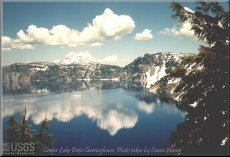 |
With its mirror-like reflection and glassy smooth surface, the beauty of Crater Lake has enticed many people to visit this area. Its radiant intense blue and fluffy snow give it an awe-inspiring serenity. The right photo displays two U-shaped valleys, Kerr and Sun Notches, on the caldera rim. | 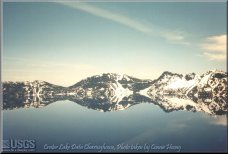 |
 |
The beauty of Crater Lake is enhanced by its unique daily and seasonal moods. Sunrise (left) peeks from the east rim to dawn a new day. Crater Lake finishes its evening with a gorgeous sunset (right) on its west rim, leaving behind an exquisite twilight for us to ponder. | 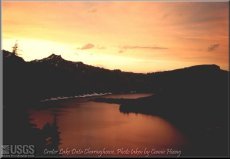 |
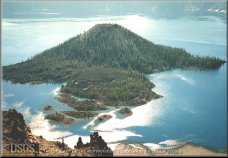 |
The beauty of Crater Lake is also defined by its internal features. Protruding from its sparkling yet calm surface is the famous Wizard Island. Wizard Island is named for its unique resemblance to a wizard's cone-shaped hat. Wizard Island is a smaller volcano inside a bigger volcano. | 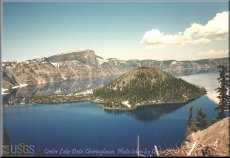 |
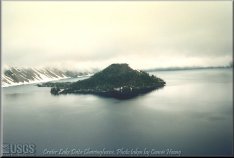 |
Accompanying Wizard Island on the lake's surface is the ghostlike appearance of Phantom Ship (right). At certain times of the day, it blends in with the caldera wall, resulting in a drifty impression of a ship sailing across the lake, and thus the name Phantom Ship. Cruising on Phantom Ship?..... | 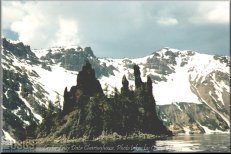 |
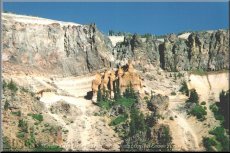 |
.....Lodging at Pumice Castle? Pumice Castle (left), about the same size as Phantom Ship, is located on the east caldera wall. Devil's Backbone (right) is yet another spectacular feature among the caldera wall. Devil's Backbone extends from the lake surface to the top of the caldera rim, characterizing the feature of the dorsal fin of a fish. | 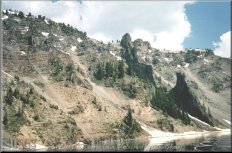 |
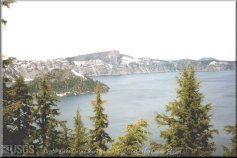 |
Llao Rock (the big rock formation behind Wizard Island) is a legendary rock that stands about 570 m (1,870 ft) above the lake surface. Its height is approximately equivalent to the depth of the deepest part of the lake. It stands about 2,438 m (8,000 ft) above sea level. | 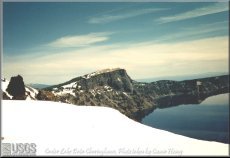 |
 |
Left is a photo of a snowy day in the middle of June 1995 (six inches of fresh snow on Father's Day). Although snow is present during most of the year, there is a small dry section in Crater Lake National Park. Pumice Desert (right) is a barren area devoid of vegetation. | 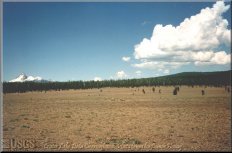 |